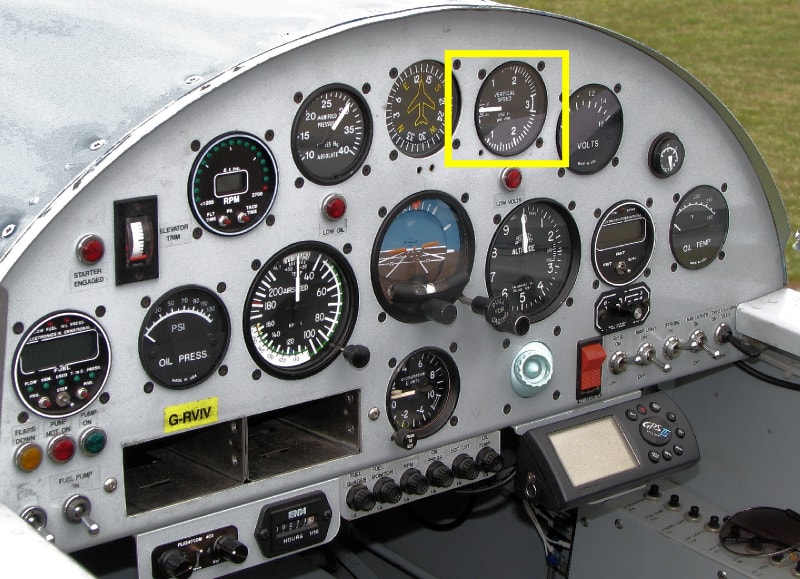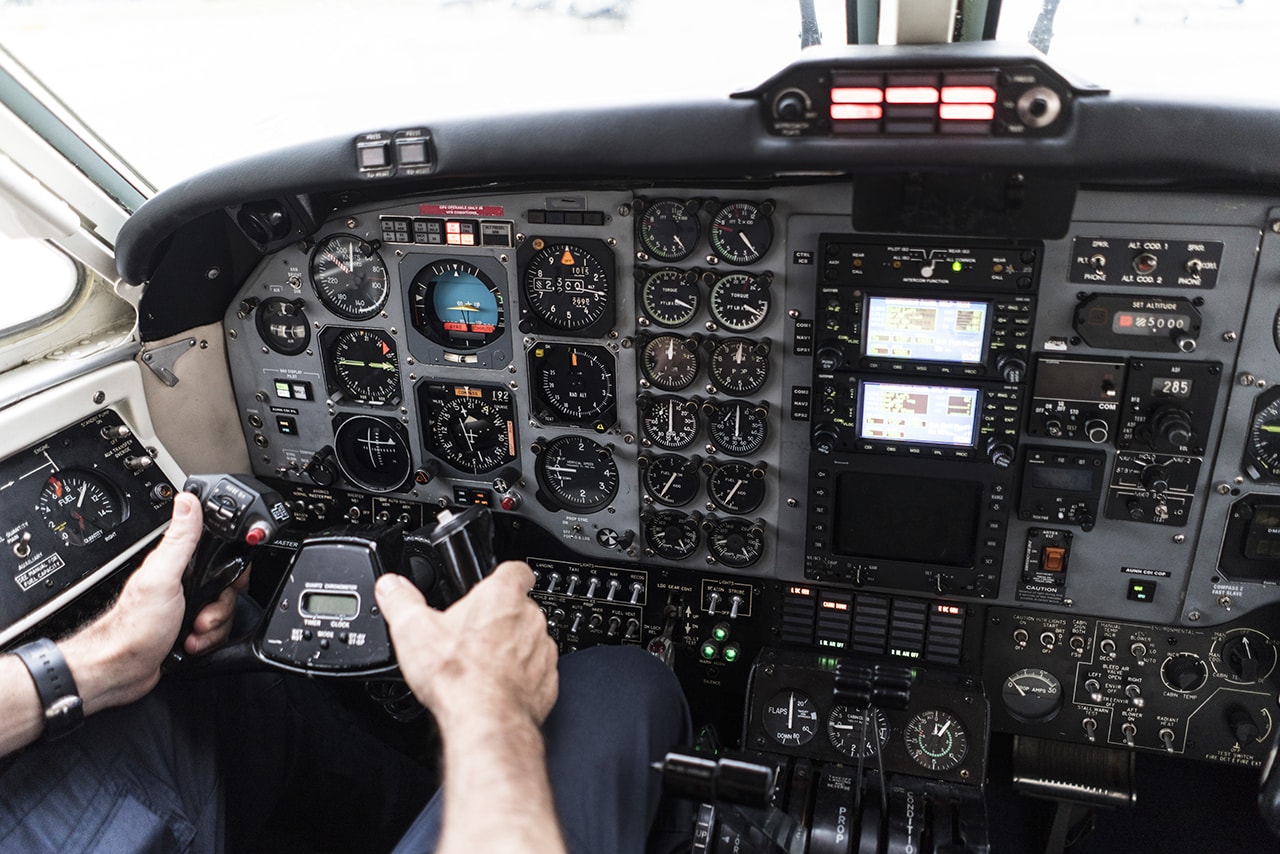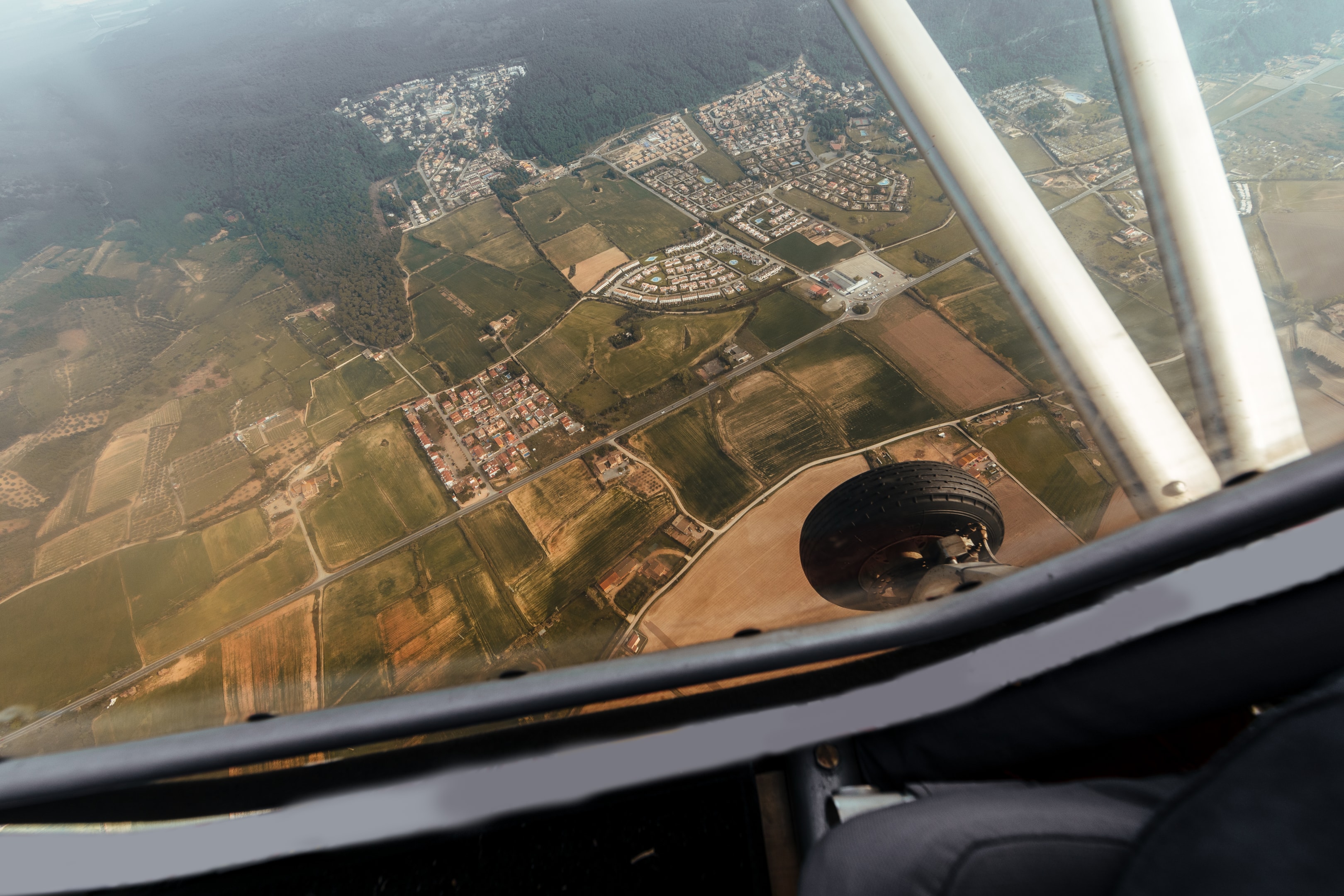Vertical Speed Indicator: How It Works and Why It Matters
Oct 07, 2024What is a Vertical Speed Indicator?
The vertical speed indicator (VSI), also known as the vertical velocity indicator, is a vital tool for pilots as it shows the aircraft’s vertical movement in feet per minute (FPM).
By giving you the facts, the VSI helps you control lift and descent and fly a safe and efficient path.
Knowing how the vertical speed indicator works helps you react to altitude changes quickly, which is key to balancing and tracking the aircraft.
This gives you the insight into vertical movement to make quick decisions and improve flight safety and efficiency.
One of the key aspects of the VSI is its function as a rate of climb indicator, providing crucial data during various phases of flight, especially when the aircraft climbs.
Its role within the 6 Pack Flight Instruments makes it indispensable for pilots navigating the skies.
Why Accuracy is Essential
The VSI tells you if you’re climbing or descending and how fast. It’s critical during takeoff and landing where you need to make precise adjustments for safety.
The information allows you to manage vertical speed and prevent accidental altitude deviations that can lead to CFIT.
Pay attention to the VSI and you’ll manage fuel and passenger comfort by smoothing out changes in altitude. It’s a multi-tasker.
Integrating VSI Data in Flight Management
Using the VSI effectively means integrating its data with the other “six pack” instruments, including the airspeed indicator, to get the big picture. The static port, part of the pitot-static system, is crucial for accurate VSI readings.
With the altimeter, you can refine altitude control during approaches and in mountainous areas where the terrain is more unforgiving.
By combining VSI with the attitude and heading indicators you get a better understanding of your flight dynamics.
This integrated approach makes for smoother navigation and better decision-making, enhancing your overall effectiveness as a rate of climb indicator.

Enhancing Pilot Training and Operations
Understanding vertical speed indicators in pilot training makes operations safer and more efficient.
Training that covers interpretation and application of VSI data, along with the heading indicator, makes pilots more agile and confident in unexpected situations.
Getting a good grasp of this instrument makes a pilot more competent in cockpit resource management.
By including this essential instrument in training, we will raise a new generation of pilots to face the challenges of flying with resilience and skill.
How a Vertical Speed Indicator Works
To gain a better understanding of how a Vertical Speed Indicator (VSI) works, it’s crucial to delve into its reliance on the pitot-static system, which is an essential aspect of an aircraft’s avionic instruments, similar to the role of a Turn Coordinator in maintaining situational awareness.
This system plays a pivotal role in numerous functions, most notably in determining the rate at which an aircraft is ascending or descending.
When an aircraft changes altitude, the pressure differential of the surrounding atmosphere changes too, and it’s this differential that the vertical speed indicator uses to provide vital information to the pilot.
Air flows into the case through a calibrated leak and static pressure ports, allowing the instrument to measure these changes accurately.
Looking closer, the static pressure source is collected through a designated port on the aircraft’s exterior, ensuring that environmental conditions can be precisely gauged.
This pressure is then conveyed via the static line into both the case of the VSI and its diaphragm, a critical component in its operational dynamics.
As the aircraft climbs, the static pressure decreases, which affects the diaphragm of the pressure instrument.
This change creates a pressure differential that causes the diaphragm to expand, influencing the movement of connected gears and the VSI needle in the instrument.
The design is intentional to ensure there is an accurate reflection of the changes in external pressure, thereby reflecting the aircraft’s vertical movement.
The unique aspect of the VSI’s design is the calibrated leak within the system. This subtle, yet vital feature helps in creating a slight delay in pressure equalization between the diaphragm and the casing.
By slowing the flow of air into the case, the calibrated leak ensures that even the smallest changes in altitude cause the diaphragm to either compress or expand.
This movement is then translated, through an intricate system of gears and rods, into the corresponding needle deflection on the instrument’s face, providing the pilot with a real-time readout of the aircraft’s vertical speed.
Understanding this interplay highlights the significance of the diaphragm itself, a brilliantly designed flexible metal container. It’s the heart of the VSI’s mechanism, linking the static air source with the mechanical parts that move the indicator needle.
With its ability to respond accurately to pressure fluctuations, the diaphragm ensures pilots have the precise data needed to make informed decisions during various phases of flight, reinforcing the value of this instrument in maintaining safe aviation operations.
Accelerometers are mounted along the vertical axis to enhance the responsiveness of the VSI, providing more accurate vertical speed readings during climbs and descents.

Types of Vertical Speed Indicators
Standard Vertical Speed Indicators
Standard Vertical Speed Indicators (VSIs) are essential instruments in aviation, designed to help pilots monitor their aircraft's vertical speed. However, these devices have a slight delay in accurately displaying changes in altitude.
Delay in Standard VSIs
Typically, standard VSIs take about 6 to 9 seconds to stabilize after a change in altitude. This delay is due to the mechanics of the instrument, which require time for pressure changes to register and reflect in the needle's movement.
Instantaneous Vertical Speed Indicators
Instantaneous Vertical Speed Indicators (IVSIs) offer a solution to the delay seen in standard VSIs. These advanced instruments provide immediate feedback, giving pilots a real-time reading of their aircraft's vertical movement.
Use of Accelerometers in IVSIs
IVSIs achieve their rapid response through the use of accelerometers. This technology detects changes in velocity quickly, ensuring that pilots have precise and up-to-date information about their climb or descent rate.

Importance of Accurate Vertical Speed Readings
Accurate vertical speed readings are crucial for safe and efficient flight operations. The vertical speed indicator (VSI) provides pilots with essential information about the aircraft’s rate of climb or descent, which is vital for maintaining control during various phases of flight. Inaccurate or delayed vertical speed readings can lead to a range of issues, including:
-
Loss of Control: Inaccurate vertical speed readings can cause pilots to overcorrect or under correct, leading to loss of control or unstable flight. This is particularly dangerous during critical phases like takeoff and landing.
-
Altitude Deviations: Inaccurate vertical speed readings can result in altitude deviations, which can be particularly hazardous during instrument meteorological conditions (IMC). Maintaining precise altitude is crucial to avoid terrain and ensure safe separation from other aircraft.
-
Reduced Situational Awareness: Inaccurate vertical speed readings can reduce a pilot’s situational awareness, making it more challenging to navigate and maintain safe separation from other aircraft. This can lead to increased workload and stress in the cockpit.
To ensure accurate vertical speed readings, it is essential to maintain the pitot-static system, which provides the VSI with the necessary data. Regular maintenance and inspections can help identify any issues with the system, ensuring that the VSI provides accurate and reliable information.
In addition to regular maintenance, pilots can also take steps to ensure accurate vertical speed readings. For example, pilots can:
-
Monitor the VSI Closely: During flight, paying attention to any changes in the rate of climb or descent is crucial. This helps in making timely adjustments to maintain stable flight.
-
Use the Airspeed Indicator in Conjunction with the VSI: By cross-referencing the airspeed indicator with the VSI, pilots can maintain a stable airspeed and rate of climb, ensuring smoother and safer flight operations.
-
Adjust Pitch and Power Settings: Pilots should adjust the aircraft’s pitch and power settings as needed to maintain a stable rate of climb or descent. This proactive approach helps in managing vertical speed effectively.
By prioritizing accurate vertical speed readings and taking steps to maintain the pitot-static system, pilots can ensure safe and efficient flight operations. Accurate data from the VSI not only enhances flight safety but also contributes to a more comfortable experience for passengers.
Benefits of Using a Vertical Speed Indicator
Vertical Speed Indicators (VSIs) play a crucial role in aviation by providing pilots with essential data about their aircraft's vertical speed.
This information is vital for maintaining precise control during level flight, ensuring safety and stability.
In addition to aiding level flight, VSIs allow pilots to accurately monitor changes in altitude.
By understanding these shifts, pilots can adjust their flight path effectively, enhancing the overall efficiency of the flight.
Instantaneous Vertical Speed Indicators (IVSIs) offer even greater precision by significantly reducing lag time. With instant feedback, pilots are equipped to make timely decisions, particularly critical during swift altitude transitions.
By minimizing the lag, IVSIs also decrease the likelihood of pilots overcontrolling the aircraft.
This helps create a smoother flight experience by reducing the need for constant adjustments and ensures pilots maintain a calm, steady hand on the controls.
Conclusion
The vertical speed indicator (VSI) is a pilot's best friend, giving us vital information on rate of climb or descent. It helps us stay on course and fly efficiently and safely.
Once you understand how a VSI works you can make better decisions. By using the benefits, it gives you can improve your flying skills and be more confident in changing altitude.
Choosing the right VSI is key to getting accurate readings. Different models have different levels of precision and response and that can make a big difference in your decision-making during flight.
So, get to know your VSI and choose the right one and you’ll fly safer and more efficiently.

